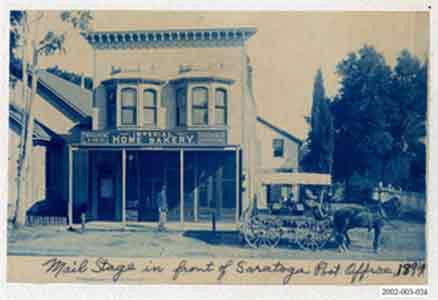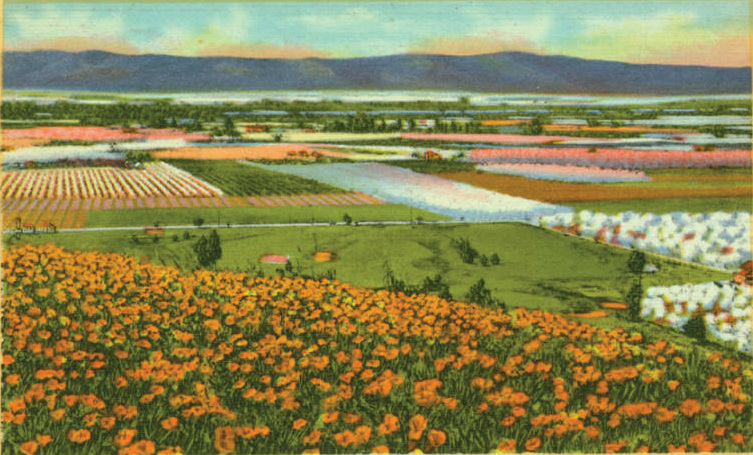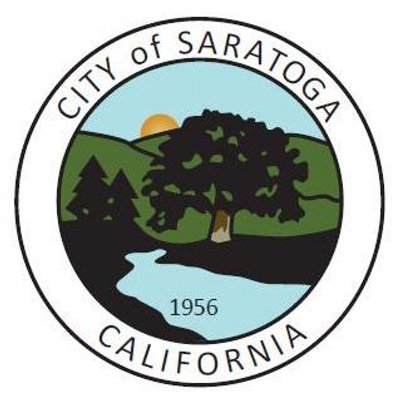
Saratoga, California is located at base of majestic redwood forest forming the locally known Saratoga Gap on the northeastern and eastern slopes of the Santa Cruz Mountains. Ohlone Indians occupied this territory during their heyday as evidenced by artifacts and tools found in these foothills. Ordered by the Spanish government in 1776 Juan Bautista de Anza also travelled through Saratoga on his way to the Monterey Bay. Half a century later a large land grant to Jose Noriega and Jose Fernandez of the land area which today is known as Cupertino, Campbell, and Saratoga was consummated. Later Manuel Alviso bought this parcel and renamed the “ranch” Rancho Quito. The early beginnings of this little town gave no clue what it would someday become. Who knew this sleepy little village would someday become the home of some of Silicon Valley’s most famous business people?
Thriving Lumber Business had Early Success

A robust lumber business was born at the base of these massive redwood forests. William Campbell constructed a sawmill (Campbell’s Gap) in 1847 on Saratoga Creek – which is about two miles west of Saratoga Village (location today). A big challenge presented itself as there were no roads to get the lumber transported effectively. Martin McCarty, an Irish immigrant, solved the problem after he leased the Campbell’s Gap from Campbell. McCarty simply built a toll road from the mill down to civilization at the base of the hill. McCarty charged $3-$6 to use his toll road (today at 3rd Street and Big Basin Way). Santa Clara County eventually took over the road and eliminated the tolls. Today this street is known as Big Basin Way.
Other entrepreneurs built mills along Saratoga Creek – a paper mill at 6th Street and Big Basin Way and a flour mill near the Hakone Gardens (present day). Because of these related businesses Saratoga was commonly referred to as Bank Mills.
Saratoga’s Namesake is Located in Upstate New York

Subsequently, in March of 1865, the Bank Mills villagers voted to rename their community Saratoga – as there was a similarity in the mineral content of the water, located at a spring a mile above Saratoga Village, as compared to that of Congress Springs at upstate Saratoga, New York.
Rich Soil, Sunshine Gave Birth to the Agriculture Industry in Santa Clara Valley

Agriculture eventually became the area’s main industry as fertile soil and an abundance of land were readily available and easier to cultivate than redwood trees. Saratoga Village began to grow as real estate lots 25′ x 100′ sold for $10-$50 and farmland sold for a $5-$40 per acre which became vineyards and orchards. Prunes, cherries and apricots worked and grew well in Saratoga land. At one time the Glen Una Ranch (600+ acres), located along today’s Saratoga-Los Gatos was presumably the world’s largest prune producer. Another early ranch named the Garrod Ranch, is still in operation today as riding stables in the northeast portion of Saratoga foothills.
In the late 1800s world-famous Paul Masson Winery was developed. Masson, a French immigrant, transplanted grape cuttings from France to plant on the hillsides along (today’s) Pierce Road. He believed that the rich Saratoga soil could produce grapes for champagnes similar to French champagne.
Each spring “A Blossom Festival” was held each to celebrate of the splendor and beauty of the fruit trees spread amongst the Saratoga foothills and landscape. This community festival is today still celebrated.
The temperate climate and mountain setting were
a perfect combination for the Saratoga Inn, which was constructed in 1912 on
Saratoga Avenue. Upwards on highway 9
toward the mountains a park was built called Saratoga Springs.
Saratoga Rapidly Became Home to the City Elite

Saratoga rapidly developed a reputation as a desirable place to live. Saratoga soon became a weekend getaway for wealthy city-folk who came to build elegant weekend homes and cabins overlooking the Saratoga valleys. One famous palatial home was owned by United States Senator James Phelan called Villa Montalvo which is now a center for the cultural arts and gardens.
When World War II ended the character of Saratoga changed forever from agricultural to suburban as homes were needed for returning veterans. As space technology, high technology and defense industries were established in surrounding communities, Saratoga’s open land soon became more valuable for homes versus fruit orchards.
The City of Saratoga was formally born in 1956, to protect the community from industrial development and looming Santa Clara county government land grabs.
Property Management and Real Estate in Saratoga

Today Saratoga has a population of approaching 30,000 and remains a highly desirable community to live and raise a family or invest. The real estate in Saratoga as compared to surrounding communities is substantially more valuable as schools are high performing, and beautiful geography attracts people from all areas of the San Francisco Bay Area. Saratoga remains a great place to invest in rental and investment properties as the land keeps getting more valuable as each day passes. For more information about Saratoga real estate, Saratoga property management, don’t hesitate to contact us at Esquire Property Management Group.
David currently is the broker/owner of several real estate related businesses which manage and maintain 300+ client properties on the San Francisco Peninsula.
Trust, transparency, and performance guarantees are the foundation of these businesses. David challenges anyone to find a PM professional that offers services similar - extensive education, customer service, and performance guarantees.
David also provides consulting for his clients on property development feasibility, construction, and complex real estate transactions.
David has authored a published law review article, three real estate books, and over 150+ real estate blog articles.
- “Wildfires, Insurance & Mortgages: Will Your Home Survive the Financial Aftermath?” - March 3, 2025
- What’s Driving California’s Commercial Real Estate Shakeup? - February 27, 2025
- Critical Issues in Triple Net Leases Investors Should Know - February 14, 2025

